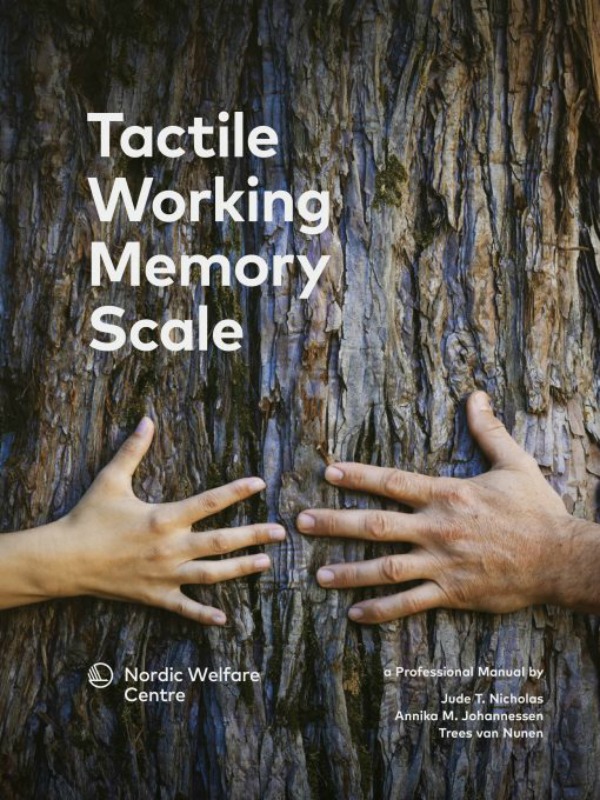Tactile Working Memory Scale: A Professional Manual

The Tactile Working Memory Scale (TWMS) is designed to give professionals tools to identify and assess tactile working memory in persons with deafblindness. Published in 2019 by the Nordic Welfare Center, authors Jude T. Nicholas, Annika M. Johannessen, Trees van Nunen aim to "give an overview of the theoretical foundations of working memory and link it to the assessment and intervention of tactile working memory. In this manual there are a series of examples to demonstrate and clarify the description of each items of the TWMS. The manual also covers several learning strategies, classified according to their particular emphases. The major emphases are on the perceptual, cognitive and social cognitive strategies."
Table of Contents
-
An introduction to Working Memory
- What is Working Memory?
- Working memory and language
- Working memory and executive control
- Working memory and subsystems
- Why is it important to understand tactile working memory in persons with deafblindness?
-
A framework to guide the assessment of tactile working memory
-
Understanding tactile working memory within the cognitive information processing theory
- Functional characteristics of the somatosensory processing system
- Working memory in social contexts: social working memory
- Brain representations of the somatosensory processing system
- Is the somatosensory system capable of neuroplasticity?
- Understanding the development of tactile working memory through transactions
- Understanding tactile working memory within the dynamic assessment approach
- Understanding tactile working memory within an ecological assessment approach
-
Understanding tactile working memory within the cognitive information processing theory
-
The Tactile Working Memory Scale (TWMS)
- Development of the TWMS
- TWMS materials and scoring procedures
-
Linking a step wise assessment with intervention
-
Optimizing the physical and social environment within a bodily-tactile modality
- Partner competencies and social cognitive strategies
-
Mediating effective cognitive strategies within the assessment
- Cognitive strategies for enhancing the link between working memory and long-term memory
- Cognitive strategies for enhancing working memory and learning
- Cognitive strategies for exercising attentional control and organizing learning
-
Optimizing the physical and social environment within a bodily-tactile modality
- Individual items with photo examples
-
Analysis of the TWMS assessment exemplified through a case illustration
-
A framework for planning and evaluating the assessment
- Case illustration
-
Phase 1: Planning the assessment
- Purpose of the assessment
- Involving the participants
- Obtaining information for formulating a case history
-
Phase 2: Assessment with the TWMS (pre-intervention profile)
- Identifying bodily-tactile working memory functions on the 20 items
- Phase 3: Implementing Effective Interventions
- Phase 4: Reassessment with the TWMS (post intervention profile)
- Phase 5: Overall evaluation and further interventions
-
A framework for planning and evaluating the assessment
This publication can be read for free online. It is also available as a free download.
